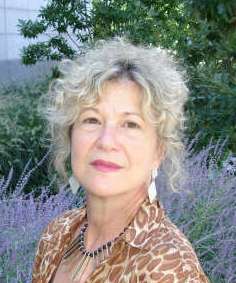
![]()
Pronunciation Corner
Joyce Mandell
 |
| Joyce Mandell |
What kind of progress can we expect from pronunciation classes?
By now, many of us involved in speech and pronunciation training or coaching have seen the excellent film, “The King’s Speech.” It gave a wholly realistic picture of the painful steps involved in trying to change one’s speech habits. Even though the King’s problem would be considered a pathological condition (a strong stammer), students who battle with exchanging old pronunciation patterns for new ones face the same frustrations and emotional upheavals. I thought it might be useful to examine what kind of changes we can realistically promote through pronunciation training.
First of all, my basic class mantra is “Awareness is the first step.” What you don’t notice you can’t possibly change. Many students tend to stay in their own linguistic communities and rarely speak English outside of the classroom; if they do use English, it is primarily functional in nature (buying things in shops, basic directions, etc.) On a daily basis, very little attention is paid to pronunciation. Most of their activities with English come from reading and writing, but as we know, the pronunciation of English is not accurately represented by the written letters. Even high-level professional students, those who have been here for many years, are constantly surprised by learning that there are such things as correct stress patterns for compound nouns and set phrases, and a different stress pattern for descriptive phrases (think of the White House as opposed to “the white house that my sister lives in”). Therefore, the first thing I tell students is that I don’t expect miraculous changes in 10 weeks. What they will get from work in a pronunciation class is an awareness of the important features of American English that make for intelligible communication. Once their ears and eyes are attuned to these features, the next step is committed classroom practice, moving from controlled activities to more spontaneous, communicative ones. Progress would be defined as the ability to monitor production of these sounds and patterns, both in themselves and in their classmates.
Clearly, the hope of all pronunciation teachers and their students is the transfer of these new skills and habits to the real world. Unfortunately, we can only do so much in terms of encouraging students to adopt new pronunciation patterns in their out-of-classroom activities. Much depends on the individual personality of the student himself/herself – some learners are eager to play around with the new sounds and feel a major sense of accomplishment if they can successfully incorporate a new sound or stress pattern into their spontaneous speech. Others are more inhibited and less likely to do anything that might draw attention to their accent – even if it means adopting a new rhythm or stress pattern that makes them appear more native-like. I have tried to “force” students to take the pronunciation lessons to the outside environment by having them keep pronunciation journals. Their assignment each week is to observe the pronunciation of both native speakers and non-native speakers, as well as their own. For example, if we are working on a particular troublesome sound like the voiced /th/, I’ll have the students listen all week for people who substitute the sound with /d/. This could happen on TV, in movies, etc. For example, one student wrote down that she was watching “Law and Order” and one character (obviously one doing a New York accent) cried out in court “Yeah, dat’s him” and pointed towards his attacker. She felt very pleased to be able to notice these pronunciation “errors” in others, and also reported an increased interest in getting to say words like “brother” and “father” correctly. Her awareness of this target sound had been heightened, and will most likely lead to improved production on her part.
_____________________________________________________________________
Joyce Mandell has been teaching speech and pronunciation skills to the non-native speaker for over 15 years, working in a variety of educational and business settings. She is an adjunct at Baruch College in both Continuing and Professional Studies and the Communication Studies Department, where she teaches public speaking. She also works individually with business professionals.
Feel free to contact her with questions or suggestions at dialogue@nystesol.org.
